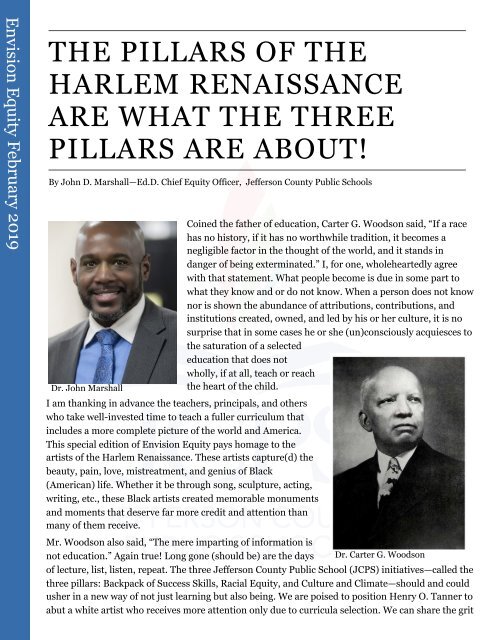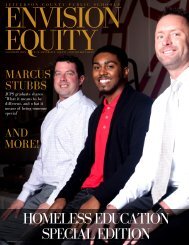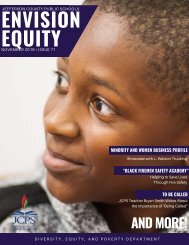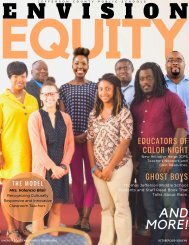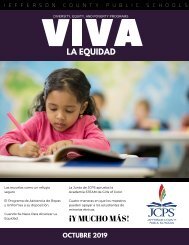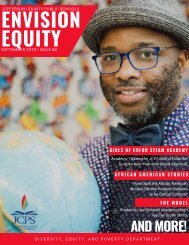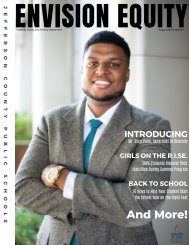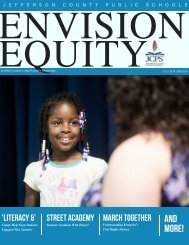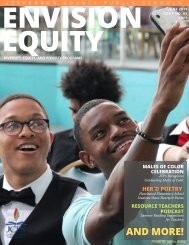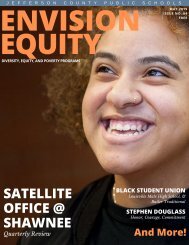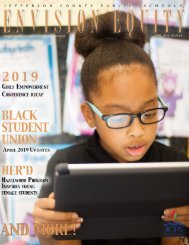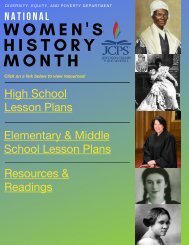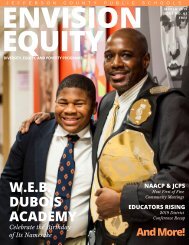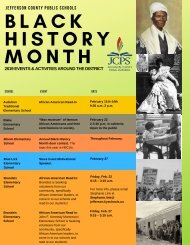Envision Equity February 2019 Special Black History Month Edition
Envision Equity February 2019 Special Black History Month Edition
Envision Equity February 2019 Special Black History Month Edition
Create successful ePaper yourself
Turn your PDF publications into a flip-book with our unique Google optimized e-Paper software.
<strong>Envision</strong> <strong>Equity</strong> <strong>February</strong> <strong>2019</strong><br />
THE PILLARS OF THE<br />
<br />
HARLEM RENAISSANCE<br />
ARE WHAT THE THREE<br />
PILLARS ARE ABOUT!<br />
By John D. Marshall—Ed.D. Chief <strong>Equity</strong> Officer, Jefferson County Public Schools<br />
Dr. John Marshall<br />
I am thanking in advance the teachers, principals, and others<br />
who take well-invested time to teach a fuller curriculum that<br />
includes a more complete picture of the world and America.<br />
This special edition of <strong>Envision</strong> <strong>Equity</strong> pays homage to the<br />
artists of the Harlem Renaissance. These artists capture(d) the<br />
beauty, pain, love, mistreatment, and genius of <strong>Black</strong><br />
(American) life. Whether it be through song, sculpture, acting,<br />
writing, etc., these <strong>Black</strong> artists created memorable monuments<br />
and moments that deserve far more credit and attention than<br />
many of them receive.<br />
Coined the father of education, Carter G. Woodson said, “If a race<br />
has no history, if it has no worthwhile tradition, it becomes a<br />
negligible factor in the thought of the world, and it stands in<br />
danger of being exterminated.” I, for one, wholeheartedly agree<br />
with that statement. What people become is due in some part to<br />
what they know and or do not know. When a person does not know<br />
nor is shown the abundance of attributions, contributions, and<br />
institutions created, owned, and led by his or her culture, it is no<br />
surprise that in some cases he or she (un)consciously acquiesces to<br />
the saturation of a selected<br />
education that does not<br />
wholly, if at all, teach or reach<br />
the heart of the child.<br />
Mr. Woodson also said, “The mere imparting of information is<br />
not education.” Again true! Long gone (should be) are the days Dr. Carter G. Woodson<br />
of lecture, list, listen, repeat. The three Jefferson County Public School (JCPS) initiatives—called the<br />
three pillars: Backpack of Success Skills, Racial <strong>Equity</strong>, and Culture and Climate—should and could<br />
usher in a new way of not just learning but also being. We are poised to position Henry O. Tanner to<br />
abut a white artist who receives more attention only due to curricula selection. We can share the grit


